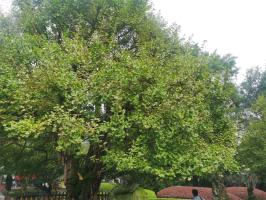Introduction
Planting trees has long been seen as a solution to offsetting carbon emissions. The idea behind this is that trees absorb carbon dioxide from the atmosphere during photosynthesis and, as a result, they store carbon in their biomass. While planting trees may seem like an easy and beneficial solution to reducing carbon emissions, several factors make this method more complicated than it may appear. In this article, we delve into the reasons why planting trees may not be as effective in offsetting carbon emissions as we initially thought.
Limitations in Carbon Storage
The first limitation of planting trees to offset carbon footprints is that trees only store carbon for a limited time - until they reach maturity. Once a tree reaches maturity, it no longer absorbs CO2; instead, it can start releasing CO2 back into the atmosphere. Therefore, to maintain a balance that offsets our carbon footprint, the forest must remain as a sink for carbon for the long term, preventing the trees from reaching maturity and emitting CO2 again.
Limited Land Resources
Another crucial factor to consider is the amount of available land for planting trees. Land that is suitable for planting is limited and most areas have specific types of forests and trees. Many countries are already deforested and have partially replaced natural forests with mono-culture tree plantations of commercial species, which provide habitat for few bird species and fewer other species. Additionally, planting trees can also be challenging in densely populated areas where space is limited.
The Impact on Biodiversity
Moreover, planting trees to offset carbon emissions can have adverse effects on biodiversity. Some species of birds, reptiles, and mammals can only survive in specific types of forests or habitat. When new forests are created, they may not be the right habitat for some species of animals in the area, and this can lead to population disparities.
Conclusion
In conclusion, while planting trees is a good idea in theory, it does not solve the problem of carbon emissions entirely. It's crucial to consider the limitations, opportunities, and challenges of the approach. Governments and private organizations must approach it with caution and address the long-term sustainability of creating new forests. They must also ensure that biodiversity is not adversely affected. Furthermore, we should encourage individuals to take personal responsibility for their carbon footprint and recognize that a more holistic approach is needed to curb carbon emissions.

 how many times do yo...
how many times do yo... how many planted tre...
how many planted tre... how many pine trees ...
how many pine trees ... how many pecan trees...
how many pecan trees... how many plants comp...
how many plants comp... how many plants can ...
how many plants can ... how many plants and ...
how many plants and ... how many pepper plan...
how many pepper plan...






























